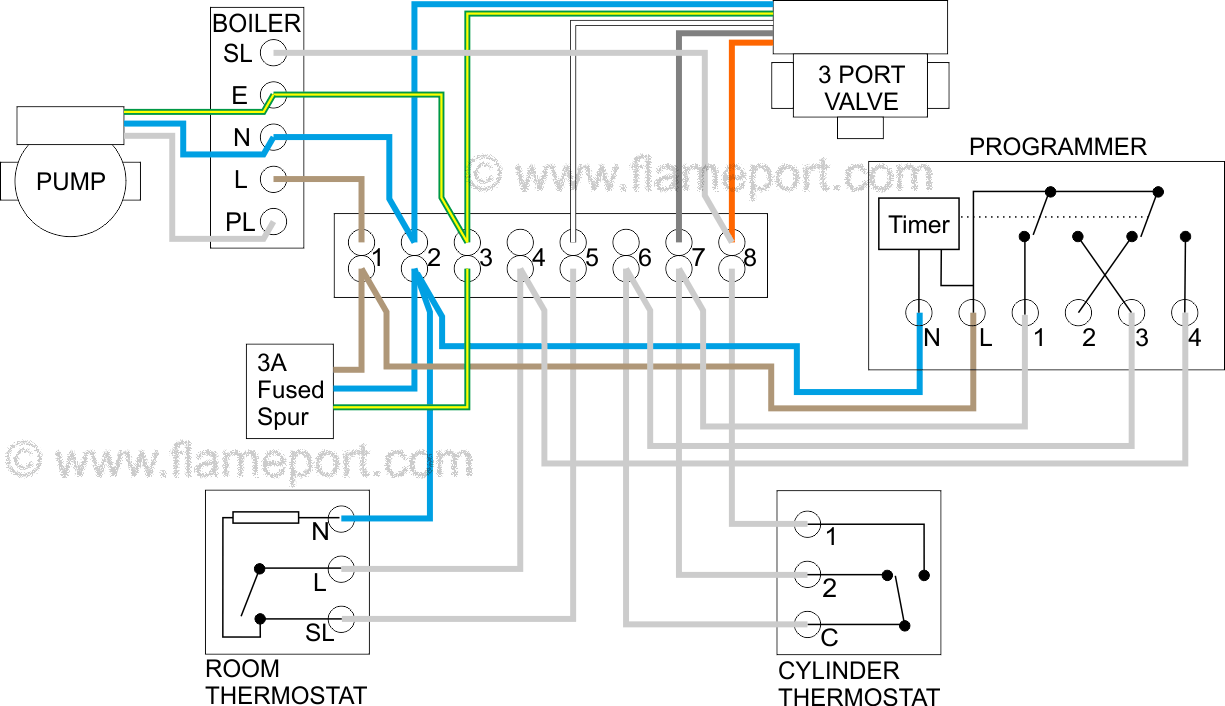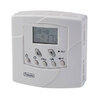…
Last edited:



Sorry for the 2 years late message, but had to ask...Beware- your new controller may not be suitable for your setup.
At the moment you have L and N powering the thermostat and volt-free contacts connecting 1 and 3 when heat is required. Lines 1 and 3 might not be 240 volt, some boilers use an extra low voltage for that function.
Your new toy uses the L supply to the stat for signalling as well as power. More info needed- pics of the terminations at the boiler or wiring centre would be useful, as would make/model of boiler, are there motorised valves, that sort of stuff


It is the symbol for a motorised valve.The Moes instructions don't really say why one would want the GA version, I would assume for heat pump as can be used heating or cooling, for a gas boiler it would be the GC version, and electric underfloor heating the GB version which has a 16 amp rather than 3 amp rating.
Thisis showing the heat pump, there is a M which I would assume means motor.
Its a UK non-condensing, non combi, open vented system, with Y Plan wiring like:Post a photo of your existing thermostat wiring

It is the symbol for a motorised valve.
View attachment 363277
For use with mains powered actuators that are driven open, or closed - usually with wet underfloor heating systems.
If you must have the Tuya, get the GC version, and do this..I am trying to avoid the GC version as I only have 3 wires to play with
It will be fine taking 230V.I could use GC and connect one of the "dry contacts" to the incoming L,
Yes, and I know you are going for minimal cost - but most smart thermostat installs would probably replace the programmer with a two channel receiver - have a look out for some Black Friday deals.I suppose I could just leave the timer set to permanently on so the live input to the thermostat would remain permanently on
Post a photo of your existing thermostat wiring

 batteries last around 2 years, I replaced every year to be sure they did not fail. Non programmable like this
batteries last around 2 years, I replaced every year to be sure they did not fail. Non programmable like this If you must have the Tuya, get the GC version, and do this..
It will be fine taking 230V.
Yes, and I know you are going for minimal cost - but most smart thermostat installs would probably replace the programmer with a two channel receiver - have a look out for some Black Friday deals.
But as asked earlier...
For a battery powered cheap programmable thermostat like this View attachment 363470batteries last around 2 years, I replaced every year to be sure they did not fail. Non programmable like this View attachment 363471 actually lasted around 4 years, caught me out with mothers house had not realised battery powered. To have a wifi connected thermostat not sure on battery life, mine not old enough to have even used one set of batteries. Even the TRV's the cheap eQ-3 last a year, the Energenie over 2 years on a pair of AA batteries.
I would agree I don't like battery, so I fitted Nest Gen 3 which only has a back-up battery, which is recharged from the 12 volt supply. However that is now only a back-up thermostat, as it will not connect to TRV heads, so main one is now a Wiser.
I would not entertain idea of a heat pump as remember the winter of discontent when we lost power every other day, and how cold it got, so my boiler is battery backed, so will continue to work with a power cut, the size of solar array and battery pack to work a heat pump is a non starter, so even if they were made so would cost less than oil or gas, I would still not have one.
As to why fit a new thermostat for only a year, this thread is confusing, as shows pictures of modern boiler and wiring to a thermostat posted by @mr C and then we have @Dazie so answering two people on the same thread, I did consider the Moes thermostat, but with the lack of any linking to TRV heads it seemed not to be the way to go.
If you need to find a tradesperson to get your job done, please try our local search below, or if you are doing it yourself you can find suppliers local to you.
Select the supplier or trade you require, enter your location to begin your search.
Are you a trade or supplier? You can create your listing free at DIYnot Local
